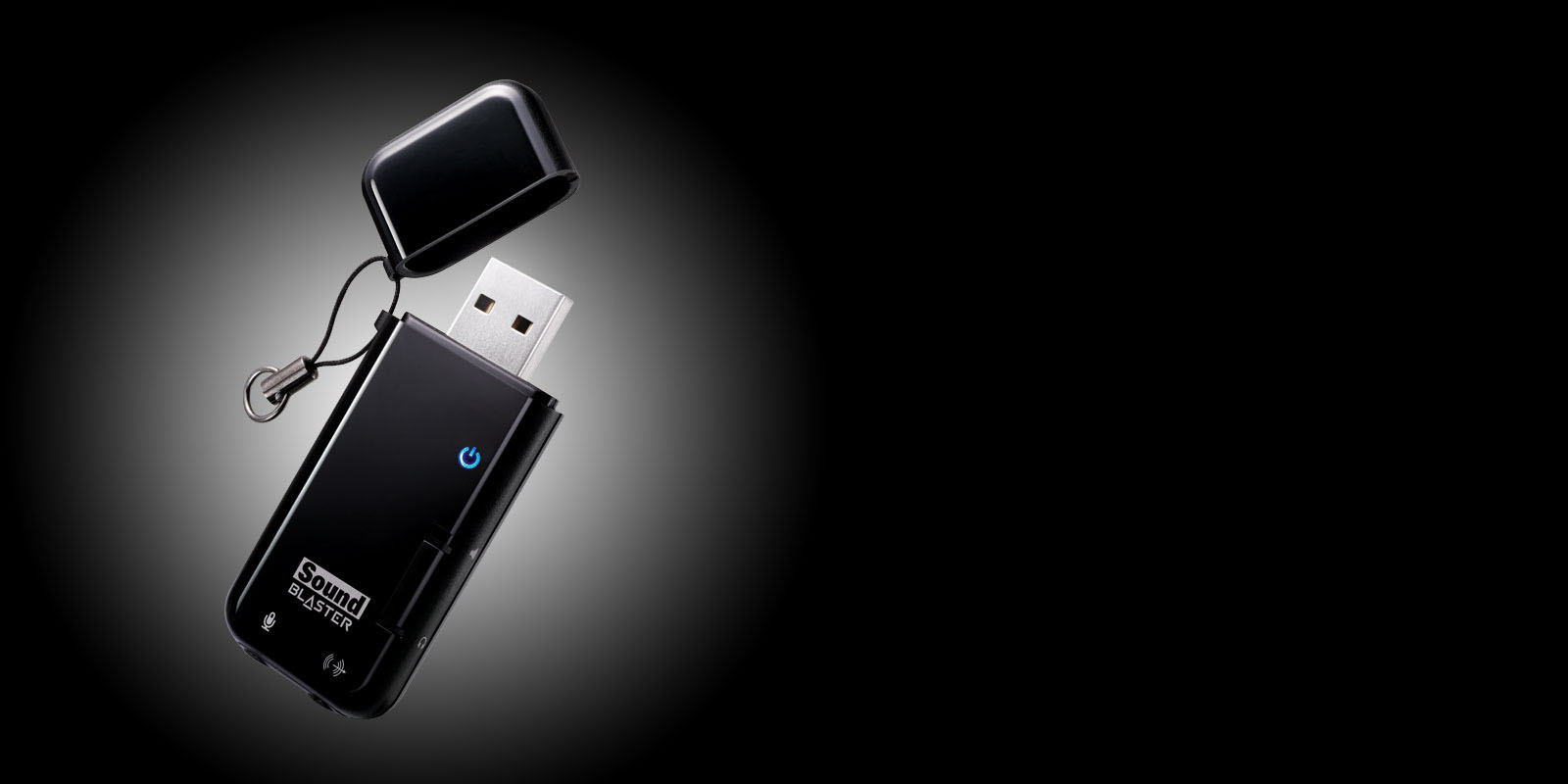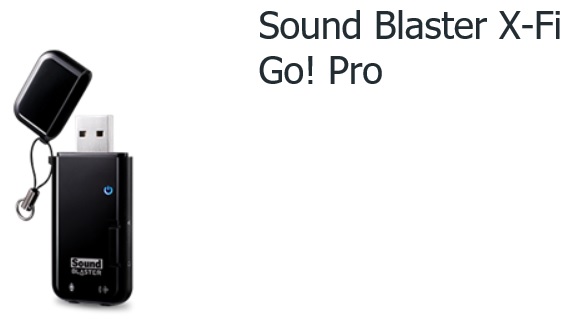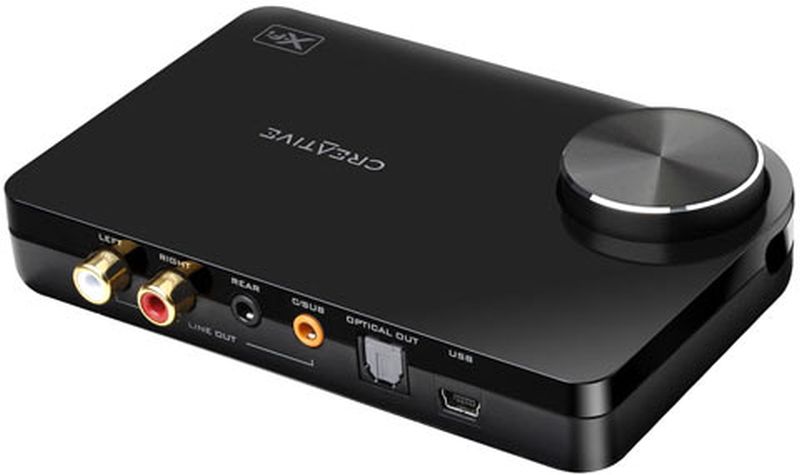

- #Sound blaster x fi go pro drivers install
- #Sound blaster x fi go pro drivers update
- #Sound blaster x fi go pro drivers software
X-Fi's resampling engine produces a near-lossless-quality result, far exceeding any known audio card DSP available at the time of release.

A poor resampling implementation introduces artifacts into the audio which can be heard, and measured as higher intermodulation distortion, within higher frequencies (generally 16 kHz and up). So, the 44.1 kHz audio must be resampled to 48 kHz (Creative's previous cards' DSPs operated at 48 kHz) for the audio DSP to be able to process and affect it. Most digital audio is sampled at 44.1 kHz, a standard no doubt related to CD Digital Audio, while sound cards were often designed to process audio at 48 kHz. The SRC engine was far more capable than previous Creative sound card offerings, a limitation that had been a major thorn in Creative's side. A significant portion of the audio processing unit was devoted to this resampling engine. The audio processor on X-Fi was by far the most powerful at its time of release, offering an extremely robust sample rate conversion (SRC) engine in addition to enhanced internal sound channel routing options and greater 3D audio enhancement capabilities. The X-Fi, at its release, offered some of the most powerful mixing capabilities available, and made it a powerful entry-level card for home musicians. X-Fi models that support "Gaming" mode use EAX 5.0, which supports up to 128 3D-positioned voices with up to four effects applied to each.
#Sound blaster x fi go pro drivers software
The Xtreme Audio model lacks the EMU20K1 chip and thus only supports the "Entertainment" mode via software emulation, while all other models support all three modes. With the X-Fi's "Active Modal Architecture" (AMA), the user can choose one of three optimization modes (Gaming, Entertainment, and Creation), each of which enables a different combination of the features of the chipset. It is interesting to note that the processor’s computational power is optimized for the work mode selected in the software. its performance, is estimated as 10,000 MIPS (million instructions per second), which is actually about 24 times higher than the estimated performance of its predecessor-the Audigy processor.

The computational power of this processor, i.e. The 130 nm EMU20K1 audio chip operates at 400 MHz and has 51 million transistors. Creative also released an external solution (named x-mod) in November 2006 which is listed in the same category as the rest of the X-Fi lineup, but is only a stereo device, and lacks the specifications of the internal offerings. It is not marketed as supporting gaming or EAX. The 'XtremeGamer Fatal1ty Pro' is a mainstream gaming model which is identical to the high-end gaming Fatal1ty FPS but lacks the additional I/O box and remote control accessories the 'XtremeGamer' is a model optimized for gaming which lacks the I/O extensibility of the higher end X-Fi models the 'Xtreme Audio', despite the "X-Fi" label, is the only product in the X-Fi line not using the EMU20K1 chip ( CA20K1) but an older chip similar to the Audigy SE and SB Live! cards ( CA0106-WBTLF) and thus lacks the hardware acceleration of 3D sound and EAX sound effects, gaming and content creation features and the I/O extensibility of all the other X-Fi models. Three additional models were added in October 2006 the X-Fi 'XtremeGamer', X-Fi 'Xtreme Audio' and the X-Fi 'XtremeGamer Fatal1ty Pro'. Thanks and happy holidays.The X-Fi (for "Extreme Fidelity") was released in August 2005 and was initially released in XtremeMusic, Platinum, Fatal1ty FPS, and Elite Pro configurations. I hope you can release a new and latest version of Alchemy and Host OpenAL with these bugs fixed, before giving up support completely.
#Sound blaster x fi go pro drivers install
On an 圆4 version of Windows, the creative drivers installer put the 64bits dll of sens_oal.dll in the syswow64 instead of system32 folder and do not install at all the 32bits dll. I tried different modes 24bit/48, 24bit/44, 24bit/96, 16bit/48, 16bit/44, disabled SBX, uncheck "Allow this device to take exclusive control of this device", change the buffer and duration values in Alchemy, none of this helped.ģ. I noticed that it happens in areas where there is reverb, so it could be related to the reverb level (already described above) or bad resampling. Clicks and pops in FEAR (Alchemy), Quake 4 and Prey (OpenAL).
#Sound blaster x fi go pro drivers update
A Windows 10 update (I think) introduced the following error in Doom 3 with Host OpenAL "Error Unloading Data From OpenAL Hardware Buffer" which can occur at the end of each level. If it can be useful I would like to report other issues, although I don't know if these will be considered: 1.


 0 kommentar(er)
0 kommentar(er)
